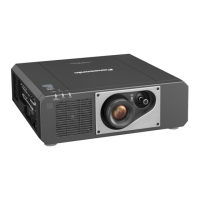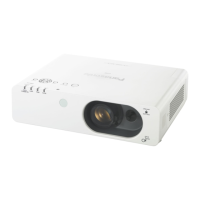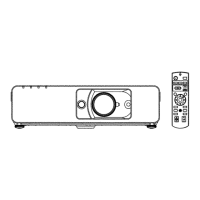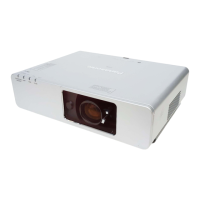Chapter 2 Getting Started — Connecting
ENGLISH - 35
Connecting
Before connecting
f
Before connecting, carefully read the operating instructions for the external device to be connected.
f
Turn o the power of all devices before connecting cables.
f
Observe the following when connecting cables. Failure to do so may result in malfunctions.
g
When connecting a cable to a device connected to the projector or the projector itself, touch any nearby
metallic objects to eliminate static electricity from your body before performing work.
g
Do not use unnecessarily long cables to connect a device to the projector or to the projector body. The longer
the cable, the more susceptible to noise it becomes. Since using a cable while it is wound makes it act like an
antenna, it is more susceptible to noise.
g
When connecting cables, connect GND rst, then insert the connecting terminal of the connecting device in a
straight manner.
f
Acquire any connection cable necessary to connect the external device to the system that is neither supplied
with the device nor available as an option.
f
If image signals from video equipment contain too much jitter, the images on the screen may wobble. In this
case, a time base corrector (TBC) must be connected.
f
If synchronization signals output from computers or video equipment are disrupted due to changes in the video
output setting or other reasons, colors of projected images may be temporarily disrupted.
f
Some computer models or graphics cards are not compatible with the projector.
f
Connect using an extension device, etc., when installing the projector away from the video equipment. The
projector may not display the image properly when it is connected directly using a long cable.
f
For details of the types of image signals that can be used with the projector, refer to “List of compatible signals”
(
x
page 213).
Connecting example: AV equipment
DVD player
Blu-ray disc player
Audio device
D-sub / component
conversion cable
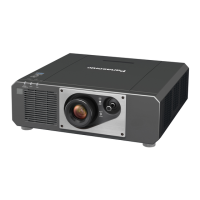
